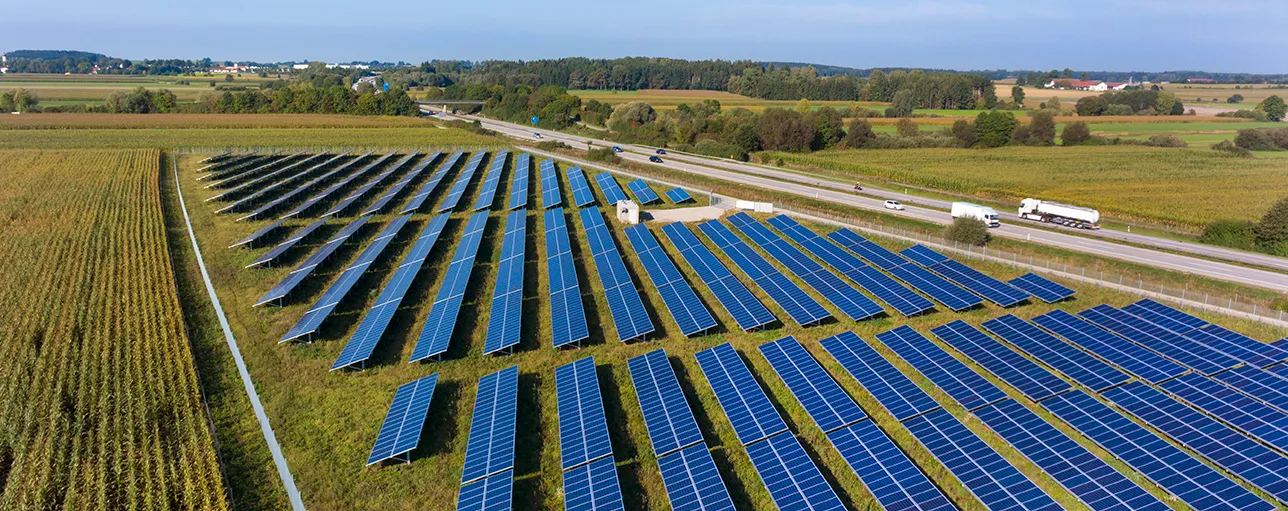DNV interviewed ENGIE to discuss their investment tax credit strategy (ITC) for solar and how our team of experts supported their projects.
DNV interviewed Geoffrey Lehv, Director, Asset Based Solutions and Ana Diaz-Puskar, Senior-Analyst, Asset Based Solutions from ENGIE to discuss their investment tax credit strategy (ITC) for solar and how our team of experts supported their projects. Check out the full interview:
DNV: What was your ITC strategy for 2019?
ENGIE: At ENGIE, we devised our solar ITC strategy by gathering an internal working group of experts from the following teams: distributed solar, utility-scale solar, energy storage accounting, tax, procurement, legal, financial analysis, and technical services. The working group assessed our diverse forward solar project pipeline, which includes utility-scale ground mount; solar plus storage; distributed generation ground mount, rooftop, and carport; as well as community solar projects. We analyzed the potential for utilizing both the safe harbor test and the physical work test (both onsite and offsite). We also considered the duration of the ITC safe harbor construction period, 4 years, and this drove our strategy with regard to how much of our forward pipeline we would attempt to achieve 2019 Start of Construction (“SOC”) on. Ultimately, the strategy that evolved from this working group review was a multi-part approach. For our utility-scale greenfield development assets we utilized i) an onsite physical work strategy for all eligible 2019 projects, ii) a safe harbor strategy for a portion of the portfolio, and iii) an offsite physical work strategy for the remainder of the portfolio. For our distributed generation and solar plus storage assets, we implemented a safe harbor strategy with enough flexibility in our equipment selection to ensure that various project types would be covered.
DNV: What measures did you employ to set ENGIE up for success? How did DNV help you with these preparations?
ENGIE: To ensure success, to the best of our ability, we included redundancy within our ITC strategy and assumed that nothing would go as planned, which seems to always be the case in energy development. We actively sought experienced partners early on in our planning process, DNV being a great example of one, tax counsel another. We assumed delivery delays on equipment and ensured proper schedule float and delivery timing to maintain ITC SOC compliance. In working with DNV, we felt throughout the execution of our plan that they deeply invested in getting their equipment audits and reports done in a complete and timely manner. DNV acted as a partner and took great care to ensure that timelines were met and that analysis was completed to ensure ITC SOC compliance. It was a collaborative effort, where DNV helped to tailor their audit and reporting to the specificities of our portfolio.
DNV: What was your experience documenting start of construction and safe harbor activities at several national and international locations?
ENGIE: Each location where an audit was necessary, was unique. Warehousing is more of an art form than people outside the industry realize (or at least more than we realized), as the goal is to get as much material into as small a space as possible, while maintaining maneuverability and speed of extraction. It’s kind of like packing all your clothes into a small closet and still being able to get any outfit you may want on any day even when you’re running very late. Knowing this normal, we worked with DNV and our warehousing partners to implement storage best practices that allowed for warehouse audits. The key was having an audit game plan with DNV and the warehouse staff before each visit. Planning was made easier thanks to the work that ENGIE had performed during the contracting phase with suppliers to properly label or package the products that were expected to be audited. Experience was also crucial, as we were much better at site five than at site one. DNV provided feedback after each site visit and something as small as storing the “next-to-arrive” equipment with labels facing the walkway, was identified as a best practice to make future audits smooth and efficient. Internationally, both ENGIE and DNV were supported by local teams who worked seamlessly to document hundreds of thousands of inventoried parts. The effort was a clear test of organizational skill for all involved and proved successful as both teams worked well together and communication within the respective companies was quite good.
DNV: What was a challenge DNV helped you overcome for your 2019 ITC efforts?
ENGIE: There were many challenges throughout this process that ENGIE and DNV had to overcome. One that comes to mind was how DNV assisted us in adjusting our strategy for warehouse visits upon realization that the COVID-19 pandemic would have serious impacts on our base plan. When it became apparent that a second round of in-person site visits would not be possible for some of the equipment we had delivered in Q1 of 2020, DNV proposed an alternative site visit protocol which utilized various international resources and alternative observation methods. This allowed for a comprehensive visit which still allowed them to take pictures, see samples of opened pallets and count inventory. DNV’s flexibility and prioritization of health and safety (a first priority ENGIE principle), as well as their excellent communication with the warehouse staff made them an invaluable partner in this unforeseen situation.
To learn more about our services, please contact: Smitty Ovitt, Principal Consultant – Solar Business Development.
